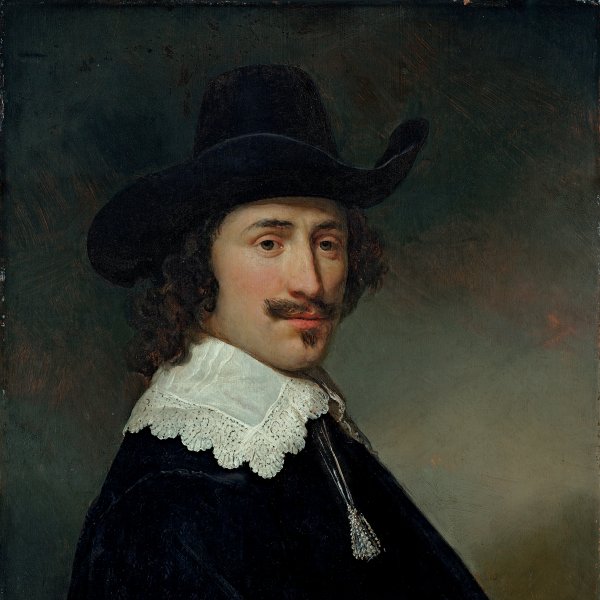Govert Flinck
Cleve, 1615-Amsterdam, 1660
Born in Cleves in the Lower Rhine region, Flinck first worked selling cloth. At the age of fourteen he started his apprenticeship as a painter in Leewarden with the painter and Mennonite preacher Lambert Jacobsz., in whose studio he met Jacob Adriaensz. Backer. In 1633 Flinck moved to Amsterdam to complete his studies with Rembrandt and collaborated with him for some years. During this period he lived in the house of the art dealer Hendrick van Uylenburgh. In 1636 he opened his own studio and his first works, such as The Shepherds (Herzog Anton Ulrich-Museum, Brunswick) and Rembrandt as a Shepherd (Rijksmuseum, Amsterdam), reveal the marked influence of his master, which persisted until the 1640s. Flinck gradually moved away from Rembrandt’s style in order to conform to the prevailing middle-class taste for highly detailed, finely painted works, and he thus came closer to the style and models of Bartholomeus van der Helst and to the Flemish Baroque. As a result, his work became more elegant and exquisitely painted. Flinck’s new style was highly admired and he received important commissions from the Amsterdam patrician classes and from other Dutch cities. He executed three large group portraits for civic companies in 1642, 1643 and 1648 and was also commissioned to paint portraits of the national heroes Admirals Tromp and Ruyter, and that of the poet Joost van den Vondel. Flinck also worked for Prince Frederick William of Brandenburg and his mother in law, Amalia von Solms. On the completion of the new Amsterdam Town Hall in 1655, Flinck and other leading artists such as Ferdinand Bol were awarded the most important commission of their careers to decorate the building. Flinck’s painting of 1656 depicting Marcus Curius Dentatus refusing the Gifts of the Samnite Ambassadors (in situ), painted for the Burgomaster’s Hall, was extremely successful and brought him a commission for twelve more history paintings, this time for the Great Gallery. Flinck died, however, on 2 February 1660, four months after he had signed the contract, and the project was undertaken by other painters.





